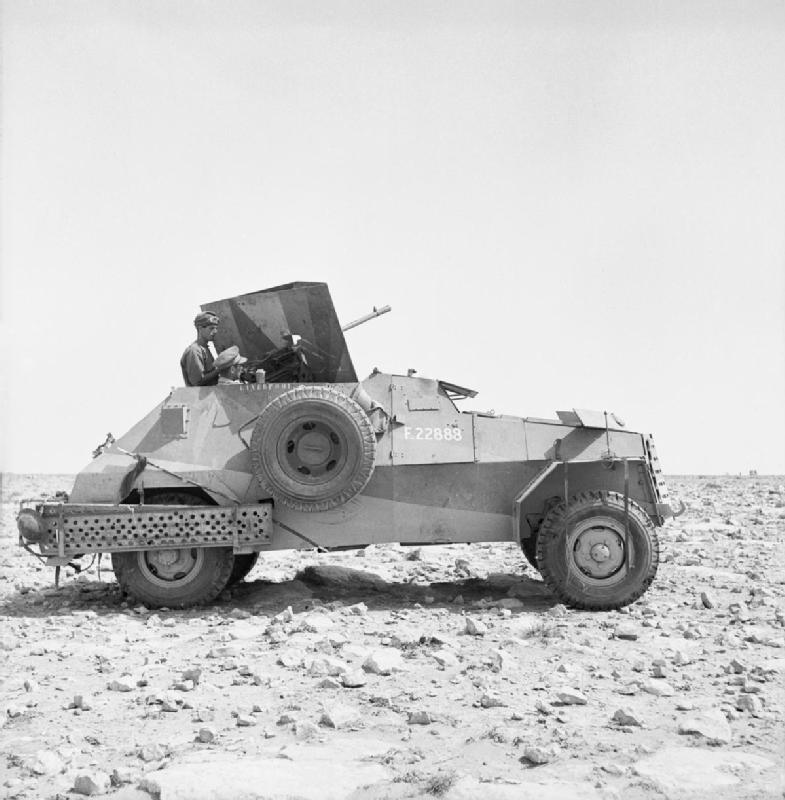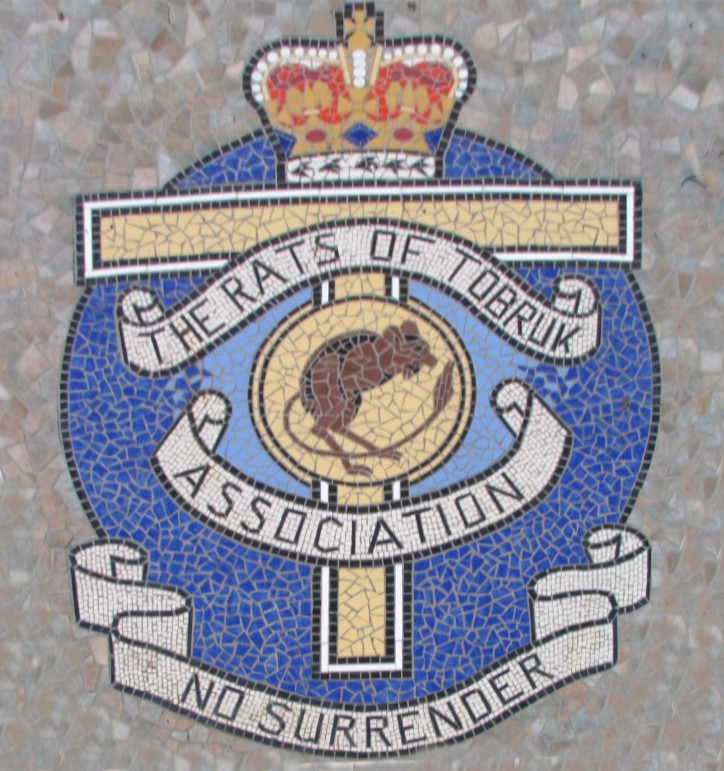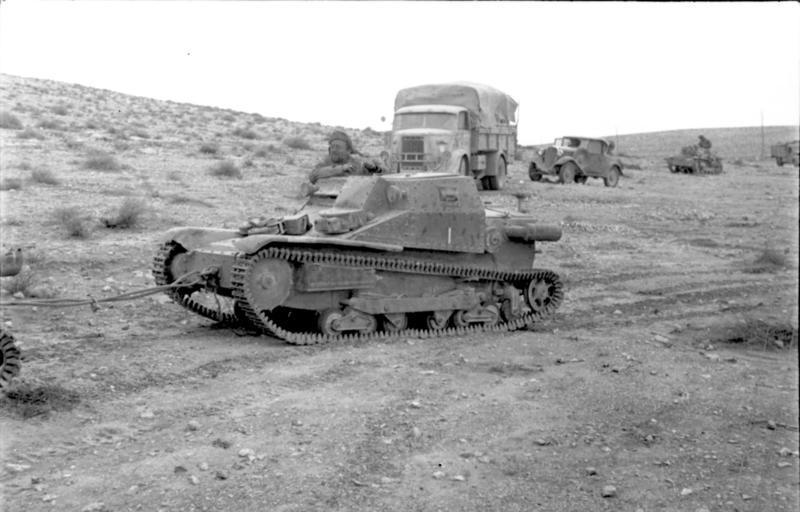|
Siege Of Tobruk
The siege of Tobruk lasted for 241 days in 1941, after Axis forces advanced through Cyrenaica from El Agheila in Operation Sonnenblume against Allied forces in Libya, during the Western Desert Campaign (1940–1943) of the Second World War. In late 1940, the Allies had defeated the Italian 10th Army during Operation Compass and trapped the remnants at Beda Fomm. During early 1941, much of the Western Desert Force (WDF) was sent to the Greek and Syrian campaigns. As German troops and Italian reinforcements reached Libya, only a skeleton Allied force remained, short of equipment and supplies. The defenders quickly became known as the Rats of Tobruk. Operation ''Sonnenblume'' forced the Allies into a retreat to the Egyptian border. A garrison, consisting mostly of the 9th Australian Division (Lieutenant-General Leslie Morshead) remained at Tobruk, to deny the port to the Axis, while the WDF reorganised and prepared a counter-offensive. The Axis siege of Tobruk bega ... [...More Info...] [...Related Items...] OR: [Wikipedia] [Google] [Baidu] |
Operation Sonnenblume
Operation Sonnenblume (/Operation Sunflower) was the name given to the dispatch of German troops to North Africa in February 1941, during the Second World War. The Italian 10th Army () had been destroyed by the British, Commonwealth, Empire and Allied Western Desert Force attacks during Operation Compass The first units of the new (DAK, Erwin Rommel) departed Naples for Africa and arrived on 11 February 1941. (In the English-speaking world, the term became a generic term for German forces in North Africa.) On 14 February, advanced units of the 5th Light ''Afrika'' Division (later renamed the 21st Panzer Division), 3 (Reconnaissance Battalion 3) and 39 (Anti-tank Detachment 39) arrived in Tripoli, Libya and were sent immediately to the front line east of Sirte. Rommel arrived in Libya on 12 February, with orders to defend Tripoli and Tripolitania, albeit using aggressive tactics. General Italo Gariboldi replaced ( Marshal of Italy) Rodolfo Graziani as the Governor-Gen ... [...More Info...] [...Related Items...] OR: [Wikipedia] [Google] [Baidu] |
Operation Brevity
Operation Brevity was a limited offensive conducted in mid-May 1941, during the Western Desert Campaign of the Second World War. Conceived by the commander-in-chief of the British Middle East Command, General Archibald Wavell, Brevity was intended to be a rapid blow against weak Axis front-line forces in the Sollum– Capuzzo–Bardia area of the border between Egypt and Libya. Although the operation got off to a promising start, throwing the Axis high command into confusion, most of its early gains were lost to local counter-attacks, and with German reinforcements being rushed to the front the operation was called off after one day. Egypt had been invaded by Libyan-based Italian forces in September 1940, but by February of the following year a British counter-offensive had advanced well into Libya, destroying the Italian Tenth Army in the process. British attention then shifted to Greece, which was under the threat of Axis invasion. While Allied divisions were being diverted ... [...More Info...] [...Related Items...] OR: [Wikipedia] [Google] [Baidu] |
Siege
A siege is a military blockade of a city, or fortress, with the intent of conquering by attrition, or a well-prepared assault. This derives from la, sedere, lit=to sit. Siege warfare is a form of constant, low-intensity conflict characterized by one party holding a strong, static, defensive position. Consequently, an opportunity for negotiation between combatants is common, as proximity and fluctuating advantage can encourage diplomacy. The art of conducting and resisting sieges is called siege warfare, siegecraft, or poliorcetics. A siege occurs when an attacker encounters a city or fortress that cannot be easily taken by a quick assault, and which refuses to surrender. Sieges involve surrounding the target to block the provision of supplies and the reinforcement or escape of troops (a tactic known as " investment"). This is typically coupled with attempts to reduce the fortifications by means of siege engines, artillery bombardment, mining (also known as sapping), or th ... [...More Info...] [...Related Items...] OR: [Wikipedia] [Google] [Baidu] |
9th Division (Australia)
The 9th Division was a division of the Australian Army that served during World War II. It was the fourth division raised for the Second Australian Imperial Force (2nd AIF). The distinctions of the division include it being: * in front line combat longer, cumulatively, than any other Australian division;Johnston (2002), p. ix. * one of the Australian military's most decorated formations; * the only 2nd AIF division formed in the United Kingdom, from infantry brigades and support units formed in Australia; * praised by both Allied and Axis generals, including Bernard Montgomery and Erwin Rommel, as well as non-Australian military historians, and; * like the 6th and 7th Divisions, being one of only a few Allied army units to serve in both the Mediterranean and Pacific theatres. During 1940, the component units of the 9th Division were sent to the UK to defend it against a possible German invasion. After serving during 1941–1942 in the North African campaign, at the Sie ... [...More Info...] [...Related Items...] OR: [Wikipedia] [Google] [Baidu] |
The Rats Of Tobruk
The Rats of Tobruk were soldiers of the Australian-led Allied garrison that held the Libyan port of Tobruk against the Afrika Corps, during the Siege of Tobruk in World War II. The siege started on 11 April 1941 and was relieved on 10 December.The great siege Australian War Memorial article. Retrieved 21 February 2020 The port continued to be held by the Allies until its surrender on 21 June 1942. Between April and August 1941, some 35,000 allies, including around 14,000 Australian soldiers, were besieged in Tobruk by a German–Italian army commanded by General Erwin Rommel. The garrison, commanded by Lieuten ... [...More Info...] [...Related Items...] OR: [Wikipedia] [Google] [Baidu] |
Greek Campaign
The German invasion of Greece, also known as the Battle of Greece or Operation Marita ( de , Unternehmen Marita, links = no), was the attack of Greece by Italy and Germany during World War II. The Italian invasion in October 1940, which is usually known as the Greco-Italian War, was followed by the German invasion in April 1941. German landings on the island of Crete (May 1941) came after Allied forces had been defeated in mainland Greece. These battles were part of the greater Balkans Campaign of the Axis powers and their associates. Following the Italian invasion on 28 October 1940, Greece, with British air and material support, repelled the initial Italian attack and a counter-attack in March 1941. When the German invasion, known as Operation Marita, began on 6 April, the bulk of the Greek Army was on the Greek border with Albania, then a vassal of Italy, from which the Italian troops had attacked. German troops invaded from Bulgaria, creating a second front. Greece recei ... [...More Info...] [...Related Items...] OR: [Wikipedia] [Google] [Baidu] |
Western Desert Force
The Western Desert Force (WDF) was a British Army formation active in Egypt during the Western Desert Campaign of the Second World War. On 17 June 1940, the headquarters of the British 6th Infantry Division was designated as the Western Desert Force. The formation consisted of the British 7th Armoured Division and the 4th Indian Infantry Division. The force was commanded by Major-General Richard Nugent O'Connor. In September 1940, at the time of the Italian invasion of Egypt, the Western Desert Force consisted of roughly 36,000 soldiers and about 65 tanks. From early December 1940 to February 1941, during Operation Compass, the exploits of the Western Desert Force earned a parody of British Prime Minister Winston Churchill's famous quote, "Never has so much been owed by so many, to so few." So many Italians were captured by the Western Desert Force that Anthony Eden said, "Never has so much been surrendered by so many, to so few." From 14 December, the 6th Australian Divi ... [...More Info...] [...Related Items...] OR: [Wikipedia] [Google] [Baidu] |
Beda Fomm
Beda Fomm is a small coastal town in southwestern Cyrenaica, Libya. It is located between the much larger port city Benghazi to its north-west and the larger town of El Agheila further to the south-west. Beda Fomm is known mainly for being the site of the final engagement of Operation Compass in the Second World War. World War II In late January 1941, during Operation Compass, the British learned that the Italians were evacuating Cyrenaica by way of Beda Fomm. The 7th Armoured Division was dispatched to intercept the 10th Army. Half way to their destination, it was evident that the division together was too slow and Combeforce, a flying column was sent on the direct route across the desert. On 5 February 1941, Combeforce arrived to cut off the retreating remnants of the 10th Army. The following day, the Italians arrived and attacked but failed to break through the blockade. The fighting was close and often hand-to-hand; at one point, a regimental sergeant major captured an ... [...More Info...] [...Related Items...] OR: [Wikipedia] [Google] [Baidu] |
Operation Compass
Operation Compass (also it, Battaglia della Marmarica) was the first large British military operation of the Western Desert Campaign (1940–1943) during the Second World War. British, Empire and Commonwealth forces attacked Italian forces of the 10th Army (Marshal Rodolfo Graziani) in western Egypt and Cyrenaica, the eastern province of Libya, from December 1940 to February 1941. The Western Desert Force (WDF) (Lieutenant-General Richard O'Connor) with about advanced from Mersa Matruh in Egypt on a five-day raid against the Italian positions of the 10th Army, which had about in fortified posts around Sidi Barrani in Egypt and in Cyrenaica. The WDF swiftly defeated the Italians in their fortified posts and at Sidi Barrani and then exploited the success, forcing the rest of the 10th Army out of Egypt and capturing the ports along the Libyan coast. The 10th Army was cut off as it retreated towards Tripolitania and defeated at the Battle of Beda Fomm, the remnants bein ... [...More Info...] [...Related Items...] OR: [Wikipedia] [Google] [Baidu] |
Italian 10th Army
The 10th Army ( it, 10ª Armata) was a field army of the Royal Italian Army, which fought in World War I and in Italian North Africa during World War II. World War I Formation After the Battle of Caporetto (November 1917) the Royal Italian Army, Italian Army (Regio Esercito) was reorganized by Armando Diaz. In the summer of 1918 (after the Second Battle of the Piave River, Battle of the Solstice) the Command continued to modify these changes and in preparation for the Italian Offensive planned for October 1918, the new 10th Italian Army was formed on 14 October. It was a British–Italian Army under command of Rudolph Lambart, 10th Earl of Cavan, the Earl of Cavan. It consisted of * 1 Italian Army corps, the XI Corps (Italian) (Corpo d'Armata) of Lt. General Giuseppe Paolini. ** 37th division of Maj. General Giovanni Castagnola (Brigata Macerata of Brig. General Florenzio Tagliaferri, 121st and 122nd Infantry Regiments; Brigata Foggia of Brig. General Raffaele Radini Tedeschi, 280t ... [...More Info...] [...Related Items...] OR: [Wikipedia] [Google] [Baidu] |




